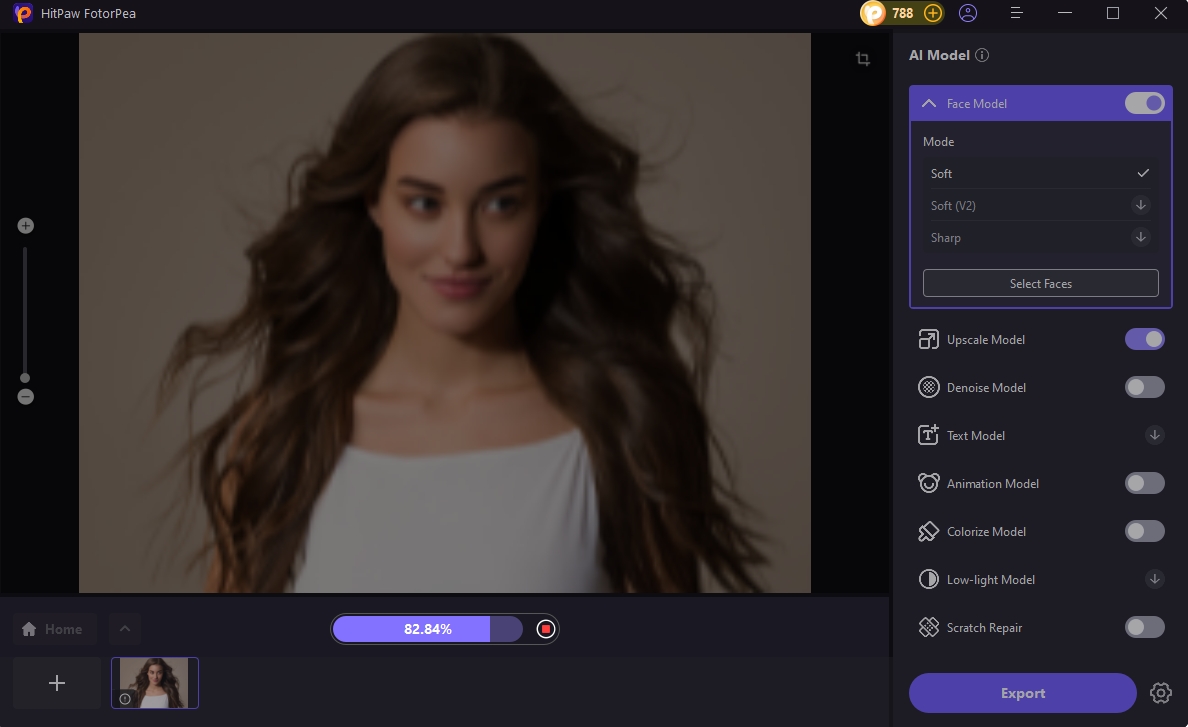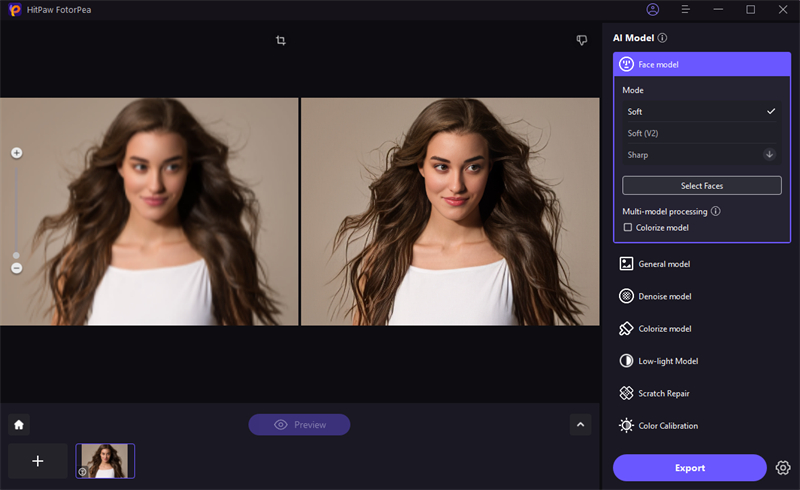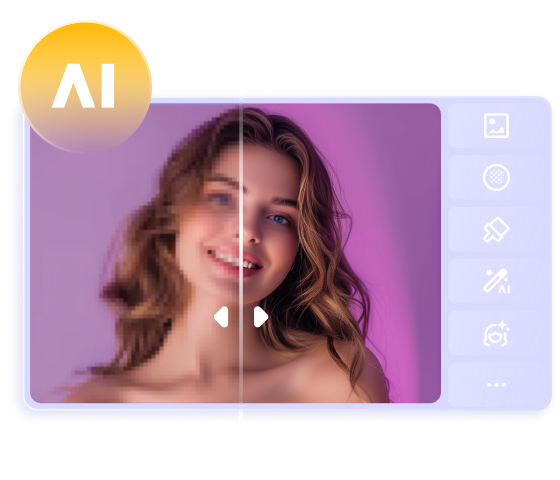Essential Tips and Skills to Master Natural Light Portrait Photography
Portrait shooting by natural light is a great way to shoot people soft and flattering. Unlike artificial light, natural light is free and can be handled easily by learning the basics. Whether you're a beginner or a professional, many photographers prefer natural light because it gives portraits a fresh and realistic look. This article shows you the important tips and skills you need to use natural light to capture better portraits. From understanding the type of natural light portraits, to setting the camera, posing, and solving common problems, it is full of advice to improve the photo.
Part 1: The Basics of Natural Light Portrait Photography
Natural light is not an artificial source of light, such as lamps or flashes, but sunlight or daylight plugged into the sun. In many cases, it is softer and uniform, so it is perfect for portrait shooting that you want to show the subject's face clearly and naturally.
What is natural light in photography?
Natural light is the use of sun and daytime light to illuminate the subject. There are direct sunlight, shade, and light plugged through the window. Natural light changes throughout the day, and its strength and softness can create a variety of atmosphere.
Best reasons for portraits
Natural light is popular in portraits because it makes the skin look real and smooth. It also emits a beautiful shine that cannot be expressed by artificial light. By using natural light, it becomes a photograph of a relaxed atmosphere.
Types of natural light
- Soft light: Occurs when the sun is hidden in the cloud or the subject is in the shade. It can spread evenly and suppress tight shadows.
- Golden Hour: Light is warm, soft and beautiful just after sunrise and before sunset.
- Light from the window: Light from the window is ideal for indoor portraits. Soft controlled light is obtained, and can be adjusted by approaching or away from the window.
Part 2: Best Times and Locations for Natural Light Portraits
When shooting portraits with natural light, it is important to choose the right time and location. Because the quality of light changes throughout the day, the impression of photography changes depending on where you take it. Better results can be achieved by understanding when light is soft and warm or too strong.
1. Golden hour advantages
Golden time is one of the best times to shoot portraits outside. The sun is in a low position in the sky, creating a warm color system of soft light. This light gently envelops the subject and suppresses the tight shadow to make the skin look smooth and glossy.
2. Shade vs. direct sunlight
When taken under direct sunlight, strong shadows and bright spots can be seen on the face, and it cannot be said that flattering is beautiful. When taken in the shade or under a tree, a uniform and soft light can be produced and the skin looks clean.
3. Indoor window or entrance
If you are indoors, you can use natural light by placing the subject near the window or open door. Light from the side creates a gentle shadow, adding depth and shape to the face. It can be approached or separated to control the intensity of light.
Part 3: Camera and Phone Settings to Use for Natural Light Portraits
Knowing how to set up a camera or mobile phone is the key to taking a portrait of natural light well. By setting the appropriate settings, the photo is clear and balanced, and the color and detail can be displayed neatly.
ISO, aperture, and white balance tips
- ISO: Keep ISO low (about 100-400) to avoid the granularity of photos when there is enough light.
- Aperture: To blur the background and focus on the face, the aperture is opened (F1.8 to F4, etc.).
- White balance: Set the white balance of the camera or smartphone to "daylight color" or adjust it manually to keep natural color.
Using reflectors or diffusers
The reflex board is a tool that bounces light into the face of the subject and fills the shadow. You can use whiteboards, foils, special reflex boards, etc. The diffuser relieves strong sunshine by placing a thin white cloth or screen between the sun and the subject.
Smartphone settings for clean shots
Most recent mobile phones have a "portrait mode" that uses natural light well. If HDR is turned on, the detail of the bright and dark parts becomes clearer. No flash. Use manual focus, if possible, tap the subject's face and set the exposure.
Part 4: Bonus Tip - Make Natural Light Portraits Shine with HitPaw FotorPea
HitPaw FotorPea is a convenient AI tool designed to improve natural light portraits after shooting. Corrects lighting problems, balances skin color, and brings out details without artificial photography. This tool preserves the natural atmosphere of the portraits while creating a clearer and more beautiful photo. It is easy to use, so it is recommended for photographers and people who share photos on social media. In simple steps, you can quickly fix common problems and finish portraits with fresh and natural impressions.
Key Features to Improve Natural Light Portraits
- Best AI photo enhancers for Windows and Mac users.
- One-click enhancement to improve images up to 16K quality.
- Quickly blur photos and eliminate noise.
- Enlarge images while maintaining sharpness and clarity.
- DeepSeek's AI image generator brings creative ideas to life.
How to Enahance Natural Light Portraits Using FotorPea:
Step 1: Install the Software
Download HitPaw FotorPea from its official page. Complete setup using the guided wizard.
Step 2: Load Your Photo
Click "Enhance Photos Now" and select a file (PNG, JPG, WEBP, TIFF).

Tip: Experiment with demo images provided in the app.
Step 3: Select AI Model(s)
After uploading, click Preview. Try out any of the 9 built-in AI models.

Step 4: Download Final Image
Hit Export when you're satisfied.

FAQs About Natural Light Portraits
Q1. How do I make skin tones look natural in sunlight portraits?
A1. Use soft light like golden hour or shade. Adjust the camera's white balance to daylight or manually tweak. Avoid severe direct sunlight and overexposure. You can also modify your skin color slightly with the editing tool after shooting.
Q2. Should I use flash with natural light portraits?
A2. Normally, a flash is not required if there is natural light. If the shadow is too strong, the reflex plate is more natural than the flash. If you do not use the flash carefully, the photo may disappear naturally.
Q3. What's the best way to shoot portraits indoors using window light?
A3. Place the subject near the window where the soft light enters from the side. Avoid direct sunlight from the window by using a curtain with a sense of transparency or shooting the sun in a low position. Fill the shadow with a reflector if necessary.
Conclusion
Natural light portraits are perfect because you can take photos of fresh and soft impressions without using expensive equipment. By understanding various types of light, choosing the right time and place, setting the camera and mobile phone correctly, and posing the subject well, you can get better results. Common issues like tight shadows and tones can be fixed with simple steps and excellent tools. As the final finish, FP Photo Enhancer allows you to create a more beautiful portrait while maintaining a natural atmosphere.










 HitPaw Univd (Video Converter)
HitPaw Univd (Video Converter) HitPaw VoicePea
HitPaw VoicePea  HitPaw VikPea (Video Enhancer)
HitPaw VikPea (Video Enhancer)



Share this article:
Select the product rating:
Daniel Walker
Editor-in-Chief
This post was written by Editor Daniel Walker whose passion lies in bridging the gap between cutting-edge technology and everyday creativity. The content he created inspires the audience to embrace digital tools confidently.
View all ArticlesLeave a Comment
Create your review for HitPaw articles